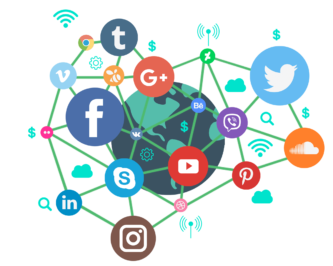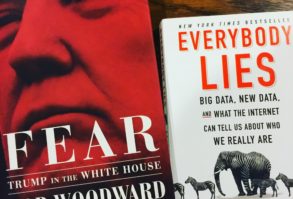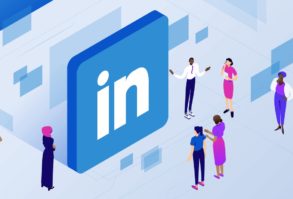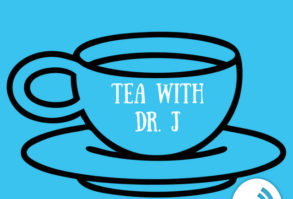I wrote a post on September 11, 2011, titled, “How the Internet Changed after 9/11–Citizen Journalism, Social Media and Mobility.” I followed what we learned about the Internet at a time of uncertainty.
Again, we find ourselves in uncertain times. Just like on 9/11 we were not expecting the unexpected. A pandemic. Everyone, not only in America but the world, is encouraged to stay home and practice social distancing.
During 9/11 we learned the Internet is a powerful tool. In March 2020 we are learning social media is a tool we gave up on until we really needed it to socially survive.
Social Distancing
The Centers for Disease Control and Prevention guidelines say to avoid close contact with people. Most importantly, stay home if you can.
This isolation can be daunting to some. Humans are social. We are meant to socialize. We are communicators.
Social Media is having a moment thanks to us practicing Social Distancing.
Instead of political bickering, instead of concentrating on hate, we are concentrating on entertaining each other. We are sharing, we are unifying, we are protecting each other.
When Tim Berners-Lee, who invented the World Wide Web, saw it as a way to communicate with each other. Quartz reported—
It all started rather innocently. In 1989, some scientists at CERN, the science research center in Switzerland, wanted to automatically share their information with fellow scientists working elsewhere in the world. Email already existed, but there was no easy way to transmit large amounts of data other than saving it on a disk and physically bringing it to another computer.
So Berners-Lee, a researcher working at CERN, created the World Wide Web. It solved the communication problem for the siloed scientists—and changed human existence as we know it.
Yes, it changed human existence. It’s also created a change that Tim Berners-Lee didn’t expect—
In other ways, though, the web hasn’t fulfilled Berners-Lee’s vision. Malicious actors and their army of bots have filled the web with information that’s partisan and intentionally misleading, altering elections, driving genocide, and forcing people to question everything they read online. People phish, spam, SWAT, and steal one another’s identities. Rancor on social media sites like Twitter has made the normal process of debate and discussion seem pretty much impossible. Let’s face it—the web can sometimes be a cesspool.
Yes, the Web can be a cesspool of haters, scammers, and fake news. We can combat the haters and scammers by socially distancing ourselves from them digitally. How do you stop fake news? You stop sharing information you haven’t verified yourself. You take back the Internet.
The Los Angeles Times reported that false information spreads just like the Coronavirus and that we are fighting an infodemic:
The prevalence of hoax missives and less nefarious but nonetheless inaccurate information led the World Health Organization’s director last month to declare that disinformation was as dangerous as the virus itself.
“We’re not just fighting an epidemic; we’re fighting an infodemic. Fake news spreads faster and more easily than this virus, and is just as dangerous,” Tedros Adhanom Ghebreyesus said on Feb. 15.
Some of the text messages, along with similar posts on Twitter and other social media platforms, compounded the confusion and worry by equating the idea of a government order instructing people to remain in their homes with martial law.
I proposed that we stop sharing information mindlessly in my last blog post What the Coronavirus can teach us about fake news and how to fight it:
What if we applied the SAME concept to spreading fake news? What if we stopped sharing every piece of information before verifying? What if when we spot Fake News that a friend shared we speak up and link to the proof that it is indeed fake?
We could stop or at least limit the spread of infected messages that are used to confuse the truth.
Fake News is just as viral as COVID-19.
Be as diligent at verifying the information you share as much as you are at washing your hands.
Social Media’s Moment
Despite the rapid spread of fake news about this virus, Social Media is having a moment right now. Just as 9/11 created stronger Internet news web sites, and connecting users socially–social media is showing exactly what it was meant to do.
Connect people.
Social Media is at its best when there is a crisis. We cheer together during the Super Bowl, we become fashion critics during the Oscars and also, we grieve together.
Our normal is being challenged by minute to minute updates on a virus that makes us feel out of control. So what are we doing on Social Media to make us feel not so alone in all this?
- People are sharing tips on how to work from home.
if your dog starts barking during a conference call while we're all working from home, don't you DARE apologize. she is being HELPFUL. put her on the video call
— danny nett 🌱 (@dannynett) March 19, 2020
Are you teleworking? Get ready for work every morning like usual — get dressed, do your hair. If possible, create a space to serve specifically as your office.
Here are 8 tips for working from home effectively 👇https://t.co/gs6GS04LO1
— NPR (@NPR) March 17, 2020
Working from home top tip: this is NOT normal. Those of us who've been doing it for years were not productive last week, not because working from home is less efficient, but because these are Interesting Times.
— Trisha Gee (@trisha_gee) March 16, 2020
I think Trisha is right: This is NOT normal. I don’t know about you–but I haven’t been able to focus.
- We are learning that Zoom is not just a sound a fast car makes.
🎶Here’s a story… about 8 lovely ladies…🎶 4th grade team meeting on Zoom! pic.twitter.com/ZVJbcabdve
— Erin Shera (@erin067) March 19, 2020
- We are learning to share positive ways to be physically distant yet still create social moments.
In the face of a mandatory country-wide coronavirus lockdown, people all over Italy held a flash mob on Friday, playing instruments, singing and clapping for all to hear — while maintaining a safe distance. https://t.co/54kL8eSSSI
— Twitter Moments (@TwitterMoments) March 13, 2020
- Celebrities are ditching their #ad posts and pitching in to actually use their talents to add joy to our day. One of my favorite celebrities to keep up with during my social distancing time is watching Arnold Schwarzenegger social distance:
Stay at home as much as possible. Listen to the experts, ignore the morons (foreheads). We will get through this together. pic.twitter.com/FRg41QehuB
— Arnold (@Schwarzenegger) March 16, 2020
- People are sharing creative videos and it’s weird and entertaining.
Clever! Why didn't I think of the turtle-sock puppet eating cars video… I can't stop watching it! Whatever will it eat next? https://t.co/VyQclAvZIT
— The Urban Daddy, Canadian Blog (@UrbanDaddyBlog) March 18, 2020
Media consumers are becoming media creators.
Lessons Learned
We always learn from these types of moments–just like we did on 9/11. People are already documenting their experiences being quarantined not through blogging, but through photos, tweets, and Facebook posts. We are historically documenting a historical moment. We have a better understanding of what life is like all over the world–not just in our community–but the world.
The world stopped and we caught up.
When 9/11 occurred we realized we wanted to rely on CNN.com when the site was not capable of handling the web traffic that day. We learned we wanted to read people’s personal blog stories. We wanted to connect. We needed to connect.
Nineteen years later, most everyone knows how to post videos, photos, and host video conferences. In 2001, we didn’t even have smartphones let alone phones that had cameras.
I wrote in my article on September 11, 2011, that on 9/11 we wanted to have a conversation, but the Internet could only connect us so far.
Guess what? We have traveled the distance. We not only can connect and converse–we also learned it’s easier to spread lies and hate.
Social media users have stepped up in a big way these past few weeks. We are coming together as one for a common purpose. We are trying to protect each other from a common enemy-COVID-10. Is social media perfect? No, it never will be. But the good sometimes outweighs the bad.
Listen to Matthew McConaughey’s motivational talk he posted on Twitter:
because every red light eventually turns green pic.twitter.com/x05GuITW4J
— Matthew McConaughey (@McConaughey) March 17, 2020
He’s right–Every red light turns green. But, what we must take away from this is how we felt together as a group. Social Media somewhat made that possible.
This is how I felt during 9/11. I felt uncertainty. I experienced the world change instantly. The world I once knew was gone. My safety felt violated. I feel the same way today during this pandemic outbreak. I also feel the good part–the unity. I also remember that we talked about unity after coming off a controversial presidential election. We felt divided until we were shocked into unity.
The one thing that I don’t feel is disconnected from loved ones. I video chatted and voice texted with friends. I posted on Twitter and Facebook. I scrolled through Instagram to peek outside my “window.” I feel connected in a social distance world.
People and communities are stepping up in new and innovative ways. Social media is having a moment and we need to recognize what that moment is.
Community
Social Media is fast just like our lives felt weeks ago. We are learning to slow down–why are we in such a rush all the time? We don’t have to live in a fast-paced world. We are learning to slow down so the pandemic slows down. Could that be our most important lesson?
There are some important lessons this pandemic has made me realize:
- Fake news, misinformation is a digital pandemic.
- Social distancing can happen both online and offline to slow down a pandemic.
- Social media was meant to create a community–not disunity
How will the Pandemic of 2020 be remembered? It will be remembered as a scary, uncertain time. But also, it is a time to remember meetings were never that important, creating is fun, a book can become a friend, cooking is meditation, and never taking for granted the simple pleasures in life.
We will remember when social distancing wasn’t that hard in the age of social media.






